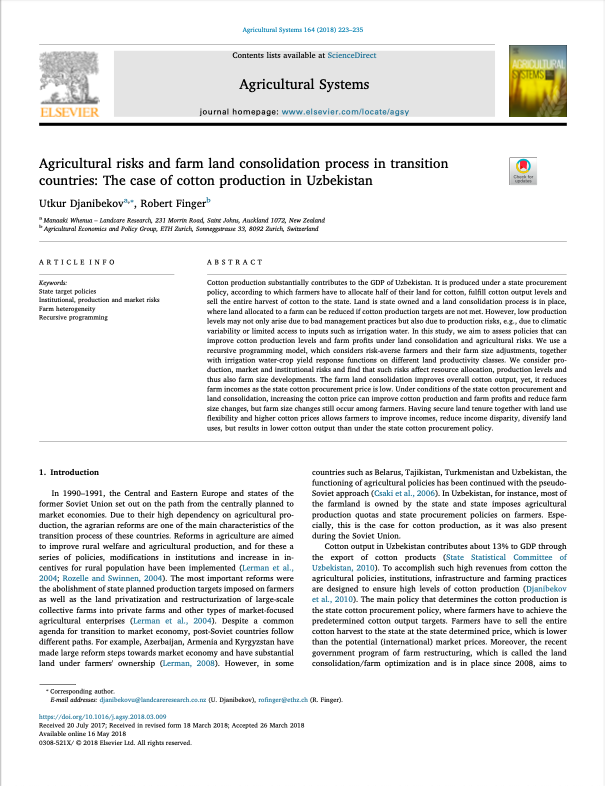Resource information
Cotton production substantially contributes to the GDP of Uzbekistan. It is produced under a state procurement policy, according to which farmers have to allocate half of their land for cotton, fulfill cotton output levels and sell the entire harvest of cotton to the state. Land is state owned and a land consolidation process is in place, where land allocated to a farm can be reduced if cotton production targets are not met. However, low production levels may not only arise due to bad management practices but also due to production risks, e.g., due to climatic variability or limited access to inputs such as irrigation water. In this study, we aim to assess policies that can improve cotton production levels and farm profits under land consolidation and agricultural risks. We use a recursive programming model, which considers risk-averse farmers and their farm size adjustments, together with irrigation water-crop yield response functions on different land productivity classes. We consider pro- duction, market and institutional risks and find that such risks affect resource allocation, production levels and thus also farm size developments. The farm land consolidation improves overall cotton output, yet, it reduces farm incomes as the state cotton procurement price is low. Under conditions of the state cotton procurement and land consolidation, increasing the cotton price can improve cotton production and farm profits and reduce farm size changes, but farm size changes still occur among farmers. Having secure land tenure together with land use flexibility and higher cotton prices allows farmers to improve incomes, reduce income disparity, diversify land uses, but results in lower cotton output than under the state cotton procurement policy.

